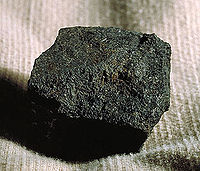
Photo from wikipedia
Abstract This paper presents an update of the Hyperbolic Function (HBF) method to evaluate the liquefaction potential of sandy soils. The HBF method was created after the 1999 Chi-Chi, Taiwan… Click to show full abstract
Abstract This paper presents an update of the Hyperbolic Function (HBF) method to evaluate the liquefaction potential of sandy soils. The HBF method was created after the 1999 Chi-Chi, Taiwan Earthquake (Mw = 7.6) using the database of case histories developed based on field observations and in situ and laboratory tests in areas affected by the 1999 event. The updated HBF method reported herein reflects the 20-year efforts of research and practice in Taiwan after the 1999 event. Here, the original database created by Hwang and his co-workers was first re-examined and updated. The updated Chi-Chi database was supplemented with the cases derived from the 2016 Meinong, Taiwan Earthquake, and some selected data from other parts of the world. This new database was then used to update the parameters of the HBF model through rigorous statistical methods. The HBF model is unbiased (as it corresponds to a probability of 50%). The updated HBF method, a deterministic model, is further extended into a probabilistic version through rigorous statistical calibration. This probabilistic version is expressed as a mapping function that relates the factor of safety (FS) against liquefaction to the probability of liquefaction (PL). The design recommendation for engineering practice in Taiwan is provided based on the calibrated PL-FS mapping function. The updated HBF method is demonstrated through examples to be an easy-to-use procedure for liquefaction potential evaluation. Use of Bayes' theorem for updating the liquefaction probability and the new concept of liquefaction likelihood ratio are also discussed.
Journal Title: Engineering Geology
Year Published: 2021
Link to full text (if available)
Share on Social Media: Sign Up to like & get
recommendations!